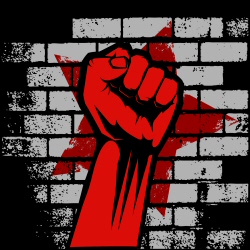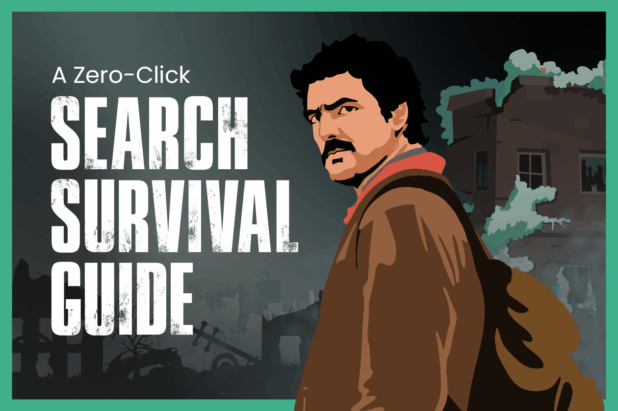 If you have ever wanted to be a fly on the wall listening to experts talk about the convergence of PR and Social Media, here’s your chance. PRSA brought together the following people to lend their thoughts about the PR (R)evolution:
If you have ever wanted to be a fly on the wall listening to experts talk about the convergence of PR and Social Media, here’s your chance. PRSA brought together the following people to lend their thoughts about the PR (R)evolution:
Moderator: Kami Watson from My PR Pro and Panelists: Deirdre Breakenridge from PFS Marketwyse, Ariel Hyatt of Ariel Publicity & CyberPR, Joseph Jaffe from Crayon and Brian Solis from FutureWorks PR. Here is the conversation as it unfolded, marked with Twitter handles.
What’s next in the realm of online and how will it impact PR?
@dbreakenridge – Google Wave is next for launching information and collaborating. As discussed in a panel yesterday 2008/2009 was the year of checking off a list of social media tools. Facebook – check. YouTube- check. Next, we need to evolve, connect the networks, improve the experience and understand real-time metrics. In addition, the consumer experience will be upgraded to reflect real-time pricing, etc.
@jaffejuice – I get irritated when people ask me what the next big thing is. The next big thing is right now. I am really bugged by this complete fixation on Twitter. SecondLife is back in a big way in the form of Twitter. What we are forgetting are podcasts and blogging as tools for peer-to-peer communication.
iPhone users only make up 3% of AT&T users, but create 70% of the data. So a big thing now is mobile. I challenge you to re-visit the checklist and ask yourself how many are hitting those items on a strategic level?
@kamichat to @briansolis – What is the impact of the ‘live web’?
@briansolis – Twitter is phenomenal in how it’s changed how people interact. It’s nothing short of a shift in how people interact. We’ve not seen its full reach. The full power of this is the human network. Twitter is changing how we communication (press release vs 140 characters).
Twitter won’t be here in 5 years, something else will but the impact is not the tool but how it’s changing the way we communicate and participate. Today’s technology isn’t tapped into to its full potential and it’s our job (pr pros) to help increase the level of interactivity.
@kamichat – What about the little guy?
@cyberPR – What’s interesting is that what is next is making sure that clients understand how to use the tools with or without us (the agency). What’s always next is that we don’t leave them cold and once we leave their Twitter stream doesn’t dry up. If you are working on the corporate level, you have to convince people that the conversation is necessary and get them involved.
@kamichat to @dbreakenridge – A lot of clients expect us to do the tactical implementation, how does that work in this new communications model? How does that work with client-side or agency-side PR pros?
@dbreakenridge – We discuss this whole ‘who owns social media’ but we all own it. You have to have your overarching strategy. Whatever you do online it has to be tied to business goals.
Don’t engage at the tactical level, start with the strategy and a big part of the strategy is to listen. What are you getting yourself into to, what is the culture of the community. If you can’t understand the different stakeholders and what they need from you, then it’s no different than pushing a message that they don’t want to hear.
@jaffejuice – The message has to come from within the client; it can’t be the job of the agency. In a survey, some 60% of the companies who have listened haven’t followed through. In other terms, you can’t be half pregnant. The half hearted attempts can backfire.
@kamichat – What kind of skills do the new PR professional needs to be the new architect and move away from the tactical role?
@briansolis – I’ll get there, but first I have to talk to Joe. Who owns email marketing right now? Email isn’t going away and it’s going to get more social. Right now, IT owns email. The lesser aspect of social media is that no one will ever own it, but someone has to be accountable.
Somewhere we got misdirected and started mass-blasting messages. However, PR is a very social activity. At some point the organization itself (PR, Sales, Customer Service) has to get social, embrace the brand and be able to represent it. PR has its biggest and grandest opportunity right now to more effectively communicate outward and be able to impact the organization in a much more valuable way. Any discussion that takes our eyes off that ball, is mute.
We need to figure out how to be valuable to the organization, and be less concerned with Twitter/Facebook and more concerned about the conversations.
@jaffejuice – I love what Brian said, in fact there is a tear in my eye. The only thing is this, when I first encountered the PR space I was blown away by the innovation and understanding the power of relationships. That said, the more I got to know the PR industry the more I realized most were still mired in the past and grappling with how to change. If you want the lead you can have it, because you are already out there but you don’t have much time before people surpass you.
@kamichat – How do we train our clients how to do this?
@cyberPR – What’s interesting about the music industry is that we are the canary in the coalmine. The music we create is the first thing that can get stolen online. Our goal as an agency is to make them understand is that they same thing they do on stage – connect with the audience – is exactly what they need to do online.
@kamichat – What are the skills that people need (we didn’t get this answered before)
@briansolis – There really isn’t a checklist. To go back to Joe’s point, listening is what gives you all the answers. It’s the listening that tells you how to respond and where, but if you are a human you can’t help but gain empathy for those talking about your brand.
@kamichat – Question from the audience: in the past, there have been 1 or 2 spokespeople, are you saying may people within the organization need to be social?
@dbreakenridge – It can approached any number of ways. However, the more opportunities for a customer to get close to your employees the closer they will become to your brand. Start on the inside with training, policy and procedures or whatever you need to get buy-in and then take the conversations to the outside.
@jaffejuice – I can’t agree more. BestBuy is changing the way they serve their customers because of social media. We can no longer control the message. The people you have on the front lines are your brand. If we can’t figure out how to harness employees then all the ads and billboards in the world don’t matter.
@briansolis – I’m nodding my head. Before you come to the table as a PR person, come as a consumer. You talk when you like something, you talk when you don’t. Ultimately you have to find the right people and there is no amount of media training that can make someone genuine.
@kamichat – What I’m finding is that clients are having internal battles over social. Do you find there is a turf war?
@jaffejuice – There isn’t a company on the planet where all departments play nice together. PR & Advertising are often still oil and water. Consumers don’t follow your org chart, the brand is the brand to them. The problem is we can’t move quick enough. Turf wars are at least good because at least somebody is trying to take ownership. It is worse if social isn’t even part of the conversation.
@kamichat – Part of this is really all about training internally. How are hooking training in and appealing to them?
@cyberPR – Now that Oprah is on Twitter, it’s getting easier. Society is making it easier for any of us trying to drag client into this arena. Do as they do helps tremendously. It’s more difficult to train clients if you don’t have a presence on the sites yourself. Show them how it’s benefited you or others.
@kamichat – We have come into this era where a personal brand is important and perhaps employed by a brand.
@briansolis – This is a really powerful time as both a brand and an individual. You, as the individual, have the opportunity to create influence within your community. This will become a job requirement in years to come. The question about personality is whether you should be you or you at X company. In Twitter and Facebook you are creating contextual networks where you might have a client and your mom commenting on the same page. I’m a big proponent of separating your personal and professional brand.
@kamichat – Question from the audience: If companies are starting to ask employees to have a social presence, how do we deal with those that block Facebook, etc at work.
@dbreakenridge – It’s not ideal. The best scenario would be to open it up, train people and let them be a proponent of the brand.
@jaffejuice – If we believe that companies will become more open, we’re going to have to train IT. It’s going to get worse before it gets better. The upcoming workforce may start to push back and withstand working for organizations who block their ability to connect.
@kamichat – How do we go from building social campaigns to commitment by the organization?
@jaffejuice – If you want to go and invest money in a 30 second campaign to get friends on Facebook, you better have a plan for what you are going to do with the friends.
On the other hand, the commitment can create a campaign as well. If you build and nurture slowly with empathy and care, you can leverage that community at any point in time for something that is more focused and socialized. Conversations are not magic beans. You can’t just plant a message and expect it to grow. Slow and steady OR fast and figure out the rest later? Both can work, but have a plan.


